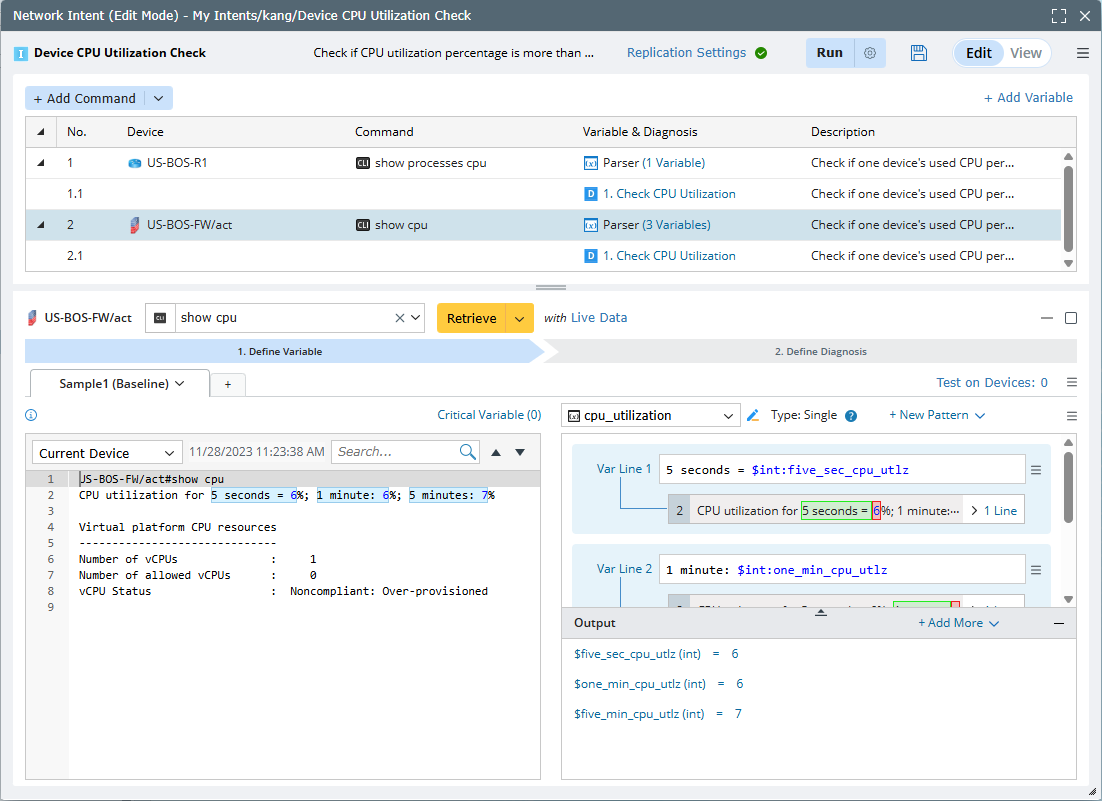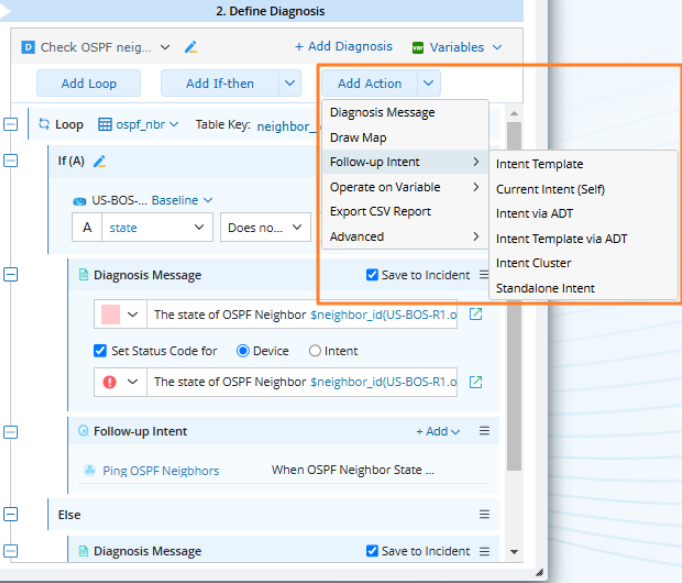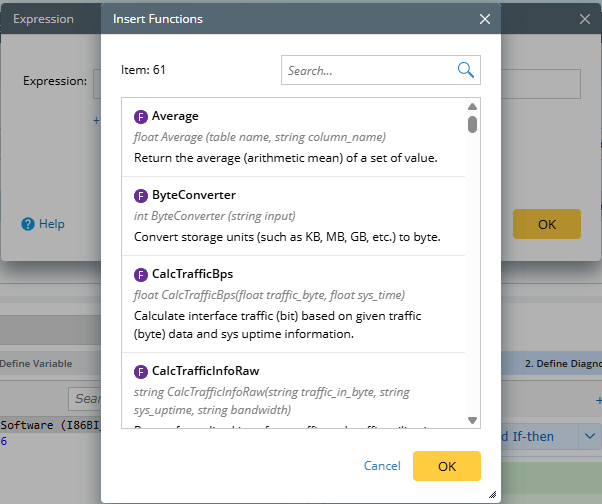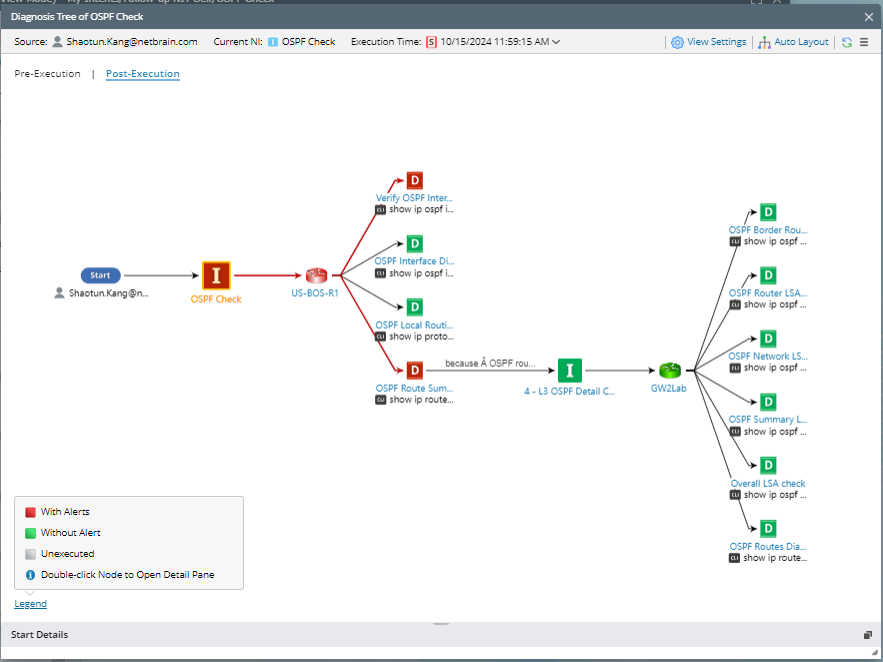Network Intent
The core automation unit of PDAS is Network Intent (NI), device-specific automation. NI describes a network design for a specific network device, what these design baselines are, and how to verify the design works properly. When a network problem occurs, one or multiple NIs are violated. By analyzing past tickets, users can create NIs to document the problems. The next time a similar situation occurs, users can be instructed to execute these NIs to diagnose the problem automatically. Further, the system can monitor these NIs to prevent these problems.
NI takes the device configurations and CLI/API/SNMP commands as the input and leverages Visual Parser, a UI-based no-code parser, to define the variables and the diagnosis logic for these variables.

|
Note: Users can quickly add a diagnosis with the template without deep knowledge of diagnosis definition. |
During intent definition, users are provided with the following critical actions and operations to make their intents applicable to more diagnostic scenarios.
- Table Operations: Users can define compound table to merge two table variables in the same NI into one table variable, and they can also define table-related diagbosis for table operations.

- Follow-up Network Intent: Users can define follow-up NIs in the diagnosis so that these NIs can be executed under certain conditions. For example, users can add OSPF detail check as the follow-up NI if the OSPF route summary changes.

- Auto-remediation: Follow-up remediation is a subsequent action that allows users to initiate remediation through a change management task to resolve exceptions discovered in the NI.
- Update Intent Baseline: An intent baseline is a snapshot of device commands stored within an NI. Updating the intent baseline helps prevent it from becoming outdated and ensures more accurate comparison results during network assessment analysis.
- Built-in Functions: These functions help users convert predefined variables into the required formats.

After intent execution, users can view the intent status code, or view the execution results in a diagnosis tree or on a map.